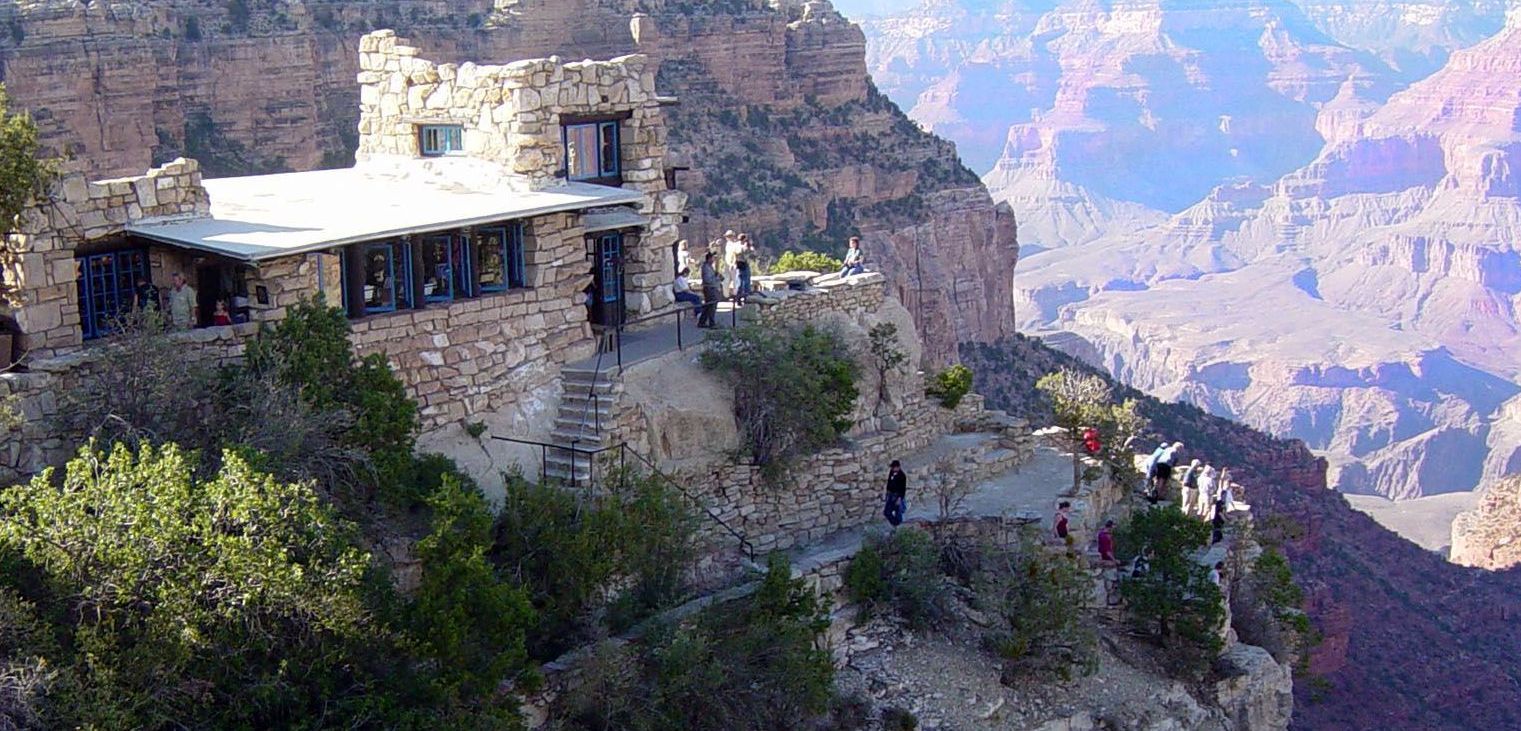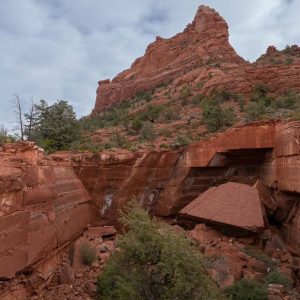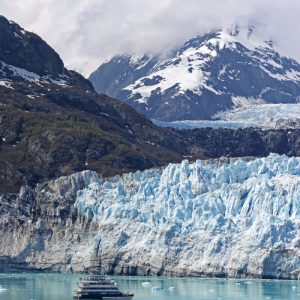 100vw, 696px” data-lazy-src=”https://acovalue.info/wp-content/uploads/2023/10/fea-3-696×464-1.jpg” /><img decoding=)
The Grand Canyon National Park is visited by over 5 million travelers every year. It has been an official national monument since 1908. It took almost 6 million years to create this big ol’ hole in the ground too. The truth is this ever-changing landscape is still moving and morphing due to the steady direction to the mighty Colorado River.
Your roving writer (and anyone else who has hiked the canyon rim to rim) can tell you the area offers more than an athletic challenge. Here you’ll find five different tribes of Indians, 30 amphibians and reptiles, 70 species of mammals, and 250 species of birds. Indeed there are many things to see and do in and near the Grand Canyon. Here are nine of them.
Contents
1. Grand Canyon Village Historic District

Travel back through the mists of time to the early 1900s. Visit the Grand Canyon Village Historic District and learn about the town when it was still only starting to take shape. Today this is the heart of tourism at the Grand Canyon.
If you’re interested in the dominant influences of the Native Americans, visit the Kolb Studio and the Hopi House. Travel east of Grand Canyon Village and you will discover the popular visitor center. Here you can check out a huge 3-D map on the canyon’s experiences known as The Canyon World.
Here you can pick up a lot of fun facts. For example, did you know that the Grand Canyon itself is larger than the entire state of Rhode Island? (Cool, huh?)
2. Havasu Falls
 100vw, 696px” data-lazy-src=”https://acovalue.info/wp-content/uploads/2023/10/2-2-696×464-2.jpg” /><img decoding=)
If you want to see Havasu Falls you’ll need to plan in advance. You will have to get the correct permits and make reservations too. Despite the extra effort required, Havasu Falls remains a popular destination as people long to see the green-blue falls. The land is outside of the jurisdiction and boundaries of Grand Canyon National Park.
3. The Grand Canyon Railway
 100vw, 696px” data-lazy-src=”https://acovalue.info/wp-content/uploads/2023/10/3-2-696×392-1.jpg” /><img decoding=)
People who work for the well-known Grand Canyon Railway claim that it is “almost as dramatic as the spectacular surroundings.” Veteran visitors confirm it lives up to the hype. One highlight of riding on the popular Grand Canyon Railway is that you will be traveling with a number of “authentic western characters” to help take you back in time to the early 1900s.
Conservationists will be happy to learn that the railroad reportedly helps keep roughly 50,000 automobiles out of the park. Thus, it also helps to preserve this famous national treasure. Oddly enough, while the park is home to an assortment of wildlife from condors to bighorn sheep, the rock squirrels are responsible for the majority of first aid treatments to visitors. In other words, do not feed them!
4. The Hualapai Tribe
 100vw, 696px” data-lazy-src=”https://acovalue.info/wp-content/uploads/2023/10/4wiki-696×994-1.jpg” /><img decoding=)
The renowned Hualapai Tribe has resided in the Southwest for many generations. There are roughly 2,300 tribe members as this goes to press. Most of them live in Peach Springs. The tribe runs a hotel, gift shop, shopping center, and restaurants. They also operate the Skywalk which can be found on a stretch of land that runs along the western rim of the canyon.
5. The Skywalk
 100vw, 696px” data-lazy-src=”https://acovalue.info/wp-content/uploads/2023/10/5-1-696×464-2.jpg” /><img decoding=)
The previously-mentioned Skywalk is a remarkable steel-framed, horseshoe-shaped, structure with a glass floor. It extends 70 feet out over the western end of the Grand Canyon and is hundreds of feet above the ground. Walking out to the very edge of Skywalk is not anyone who is the least bit faint of heart. It does, however, provide one with an incredible view of one of the seven natural wonders of the world.
6. National Geographic Visitors Center and IMAX Theater
 100vw, 550px” data-lazy-src=”https://acovalue.info/wp-content/uploads/2023/10/6wordpress.jpg” /><img decoding=)
Veteran visitors say that National Geographic has built the “ultimate” visitors center here at the Grand Canyon Canton hotel room. Discover the details about the popular Inner Grand Canyon’s attractions, dining, shopping, and other events. Grab a quick bite to eat in the Explorer’s Café where the staff specializes in quick eating at an affordable price. Those who have been. suggest such favorites as hot dogs, pizza, sandwiches and the Asian rice bowls complete with fresh vegetables. Be sure to see the critically acclaimed IMAX movie Grand Canyon – The Hidden Secrets in what is one of the world’s first IMAX theaters.
7. Horseshoe Bend
 100vw, 696px” data-lazy-src=”https://acovalue.info/wp-content/uploads/2023/10/7-1-696×464-1.jpg” /><img decoding=)
Another popular attraction here is Horseshoe Bend. Horseshoe Bend is situated approximately 140 miles from the North and South Rim. It is 5 miles from the Grand Canyon National Park entrance. Once you arrive there, you need only hike about three-quarters of a mile to the edge that overlooks the beauteous bend in the mighty Colorado River.
8. Lake Powell
 100vw, 696px” data-lazy-src=”https://acovalue.info/wp-content/uploads/2023/10/8-1-696×464-2.jpg” /><img decoding=)
Lake Powell can be found along the border of Arizona and Utah. This reservoir is the USA’s second-largest man-made lake. It’s also a very popular vacation destination as well.
It is 186 miles in length and includes 1,960 miles of shoreline. When it is full it stores a maximum of 24,322,000 acre-feet of water. There’s a lot to do here too. You can go fishing, ride jet skis and even rent a houseboat if you would like to stick around a bit longer.
9. Antelope Canyon
 100vw, 696px” data-lazy-src=”https://acovalue.info/wp-content/uploads/2023/10/9-3-696×464-1.jpg” /><img decoding=)
Instagramable Antelope Canyon is reported to be one of the United States’ “most photographed” locations. This stunning spot can be found approximately 12 miles southeast of the above-mentioned Lake Powell. More specifically, it is situated on official Navajo tribal land just outside of Page, Arizona. You can only visit Antelope Canyon by signing on with a guided tour. If you are a shutterbug, the best time to visit is during the early and late morning hours when the lighting is better.
Although the famous Grand Canyon may appear to be incredibly deep, especially if you are on the Skywalk looking down into it is actually not the world’s deepest canyon. If you want to see the deepest canyon on the planet you will have to travel to Tibet in Asia. There you will find the Yarlung Tsangpo Grand Canyon. America’s Grand Canyon, however, remains one of the country’s most impressive national monuments.



